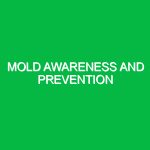Introduction
Legionella is not just a name; it represents a significant threat to public health, particularly when it comes to water systems. Understanding Legionella and water system safety is crucial in the Health, Safety, and Environment (HSE) domain, where the stakes are high. The bacteria can cause Legionnaires’ disease, a severe form of pneumonia, and Pontiac fever, which, while less severe, can still lead to considerable discomfort. Water systems, including cooling towers, hot water tanks, and plumbing systems, can provide an ideal environment for Legionella to thrive. This article delves into the complexities surrounding Legionella and water system safety, offering insights, precautions, and regulatory frameworks to ensure health and safety in various environments.
What is Legionella?
Legionella is a genus of bacteria that comprises over 50 species. Among these, Legionella pneumophila is the most well-known and frequently isolated species responsible for human infections. This bacterium is ubiquitous in freshwater environments but can proliferate in man-made water systems, especially when conditions are favorable, such as warm temperatures (20-50°C or 68-122°F), stagnant water, and the presence of organic material.
The term “Legionella” gained notoriety after an outbreak in 1976 at a convention in Philadelphia, where attendees suffered from pneumonia-like symptoms. This incident led to the identification of Legionnaires’ disease, named after the American Legion, the organization hosting the event. The initial outbreak highlighted the severe consequences of poor water system management and the critical need for effective safety measures.
Potential Hazards and Risks Associated with Legionella
Understanding the risks associated with Legionella in water systems requires a comprehensive examination of various hazards. Here are some of the most significant:
1. Stagnant Water
Stagnation is one of the primary risk factors for Legionella proliferation. Water that remains undisturbed in pipes, tanks, or cooling towers can become a breeding ground for bacteria. For instance, a hotel that hasn’t had a guest for an extended period may unknowingly harbor dangerous levels of Legionella in its plumbing system.
2. Temperature Control
Legionella thrives in warm water, typically between 20°C and 50°C. Water temperatures below 20°C can inhibit growth, while temperatures above 60°C can kill the bacteria. However, many hot water systems operate between 37°C and 60°C, providing the perfect environment for Legionella to flourish if not properly managed.
3. Biofilm Formation
Biofilms are complex communities of microorganisms that adhere to surfaces in water systems. They can protect Legionella from disinfectants and contribute to its survival. Biofilms are often found in showerheads, faucets, and cooling systems. A personal experience from a facilities manager revealed that after cleaning and disinfecting a cooling tower, they noticed a significant decrease in Legionella counts, underscoring the importance of regular maintenance.
4. Aerosolization
When water containing Legionella is aerosolized—such as through showers, hot tubs, or cooling towers—the bacteria can be inhaled. This poses a severe risk, particularly for individuals with compromised immune systems, the elderly, and smokers. A case study from a large retirement community illustrated how an outbreak occurred after a routine maintenance check on the cooling system inadvertently aerosolized contaminated water.
Safety Precautions and Best Practices for Legionella and Water System Safety
To mitigate the risks associated with Legionella, it’s essential to implement a series of safety precautions and best practices:
1. Regular Water System Maintenance
Routine checks and maintenance of water systems are vital. This includes flushing out stagnant water, cleaning and disinfecting cooling towers, and ensuring that hot water systems are maintained above 60°C. Documenting these maintenance activities can provide a clear trail for regulatory compliance and safety assurance.
2. Temperature Monitoring
Keep a close eye on water temperatures. Installing temperature gauges and alarms in water systems can help ensure that the water is being kept at safe temperatures. Regularly reviewing these records can help identify any fluctuations that could indicate a problem.
3. Risk Assessments
Conducting thorough risk assessments of water systems is critical. This should include identifying potential sources of Legionella, assessing existing control measures, and implementing corrective actions. Engaging an external consultant or a microbiologist can provide valuable insights into hidden risks.
4. Employee Training
Training staff on the importance of Legionella control is essential. Employees should understand the risks associated with the bacteria, how to identify potential hazards, and the importance of following maintenance protocols. Regular workshops can reinforce this knowledge and ensure that safety remains a priority.
5. Implementing a Water Safety Plan
A comprehensive water safety plan outlines procedures for water system management, from risk assessment to routine monitoring. This plan should be regularly updated and reviewed to adapt to any changes in the water system or regulatory environment.
Regulations and Standards Governing Legionella and Water System Safety
Understanding the regulatory framework surrounding Legionella and water system safety is paramount for compliance and risk management. Several key regulations and guidelines exist to guide organizations in managing Legionella risks:
1. The Health and Safety at Work Act 1974 (UK)
This act places a general duty on employers to ensure, as far as is reasonably practicable, the health and safety of their employees. This includes managing risks associated with Legionella in water systems.
2. The Control of Substances Hazardous to Health (COSHH) Regulations 2002 (UK)
COSHH requires employers to assess the risks associated with hazardous substances, including biological agents like Legionella. Employers must implement measures to control exposure and ensure safety.
3. The HSE’s Approved Code of Practice (ACOP) L8
This document provides practical guidance on the management of Legionella bacteria in water systems. It outlines the responsibilities of duty holders and recommends best practices for risk assessment and control measures.
4. ASHRAE Standard 188
In the United States, the American Society of Heating, Refrigerating and Air-Conditioning Engineers (ASHRAE) Standard 188 provides guidelines for the design, construction, and operation of water systems to minimize the risk of Legionella growth.
Conclusion
Legionella poses a significant risk to public health, particularly in poorly managed water systems. Understanding this bacteria and implementing effective safety measures is not just a regulatory requirement but a moral obligation for those in the HSE domain. By adhering to best practices in water system management, conducting regular risk assessments, and ensuring compliance with relevant laws and guidelines, organizations can protect their employees and the public from the dangers of Legionella.
As we continue to learn more about this bacteria and its behavior in various environments, staying informed and proactive is key. After all, water is essential for life, but it can also be a silent carrier of potentially deadly pathogens. Taking ownership of water system safety is an investment in health, safety, and peace of mind.


